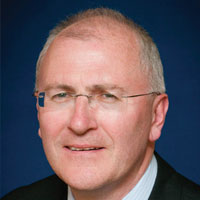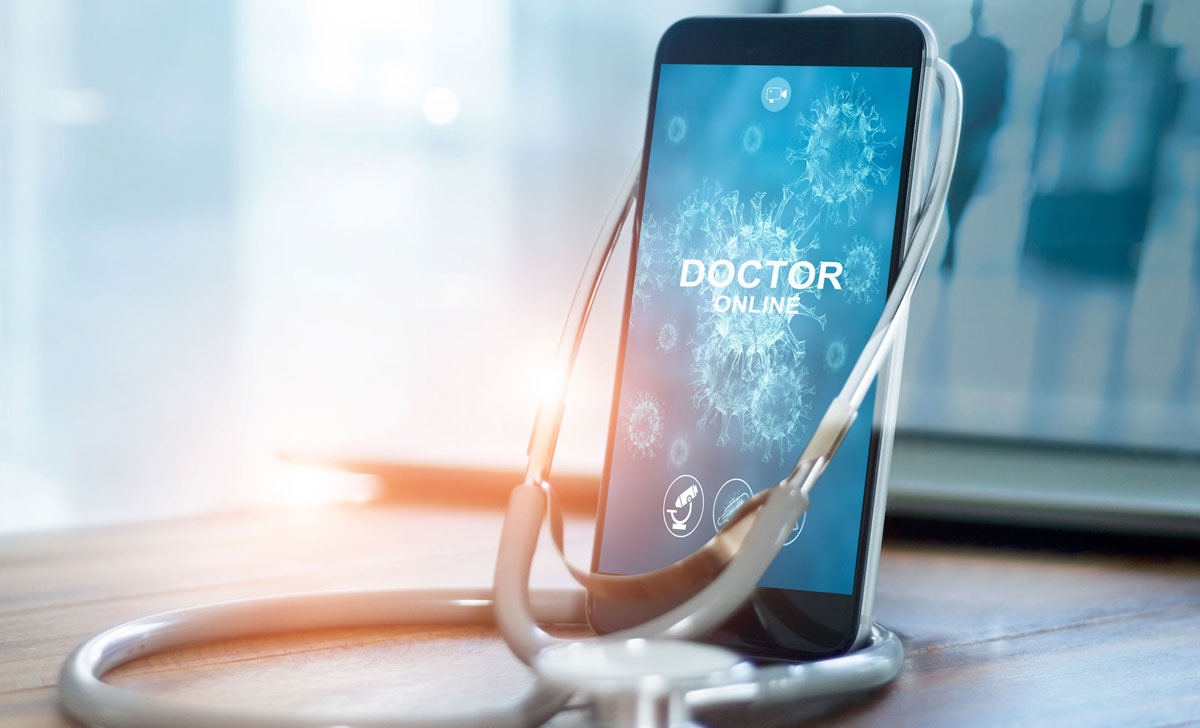The Covid-19 pandemic has had a major influence on the direction of e-health and digital health in Ireland and abroad. David Lynch looks at recent trends in t he area and challenges that lie ahead
Last month at the online National Health Summit, Dr Gabrielle Colleran, Consultant Paediatric Radiologist and Vice-President of the Irish Hospital Consultants Association, spoke about the rise in the use of telemedicine and e-health during the Covid-19 pandemic. Dr Colleran pointed out that the computer in one of the hospitals in which she works has Windows 7.
“It takes me approximately 25 minutes to log in,” she said. “It’s the first thing I do in the morning.”
As the Covid-19 pandemic in Ireland enters a new phase, Dr Colleran said she hoped there would be “dramatic changes in the investment in our IT infrastructure.”
“We really need to have a health identifier. We really need to have e-health across the system… the IT system is vulnerable and we need the investment in it.”
This is not solely the view of hospital consultants. A recent position paper on pandemic control by the Irish Society of Specialists in Public Health Medicine called on the State to “address longstanding and critical IT infrastructure gaps, including the lack of a case and outbreak management system, an integrated surveillance system, an immunisation reporting system”.
There have been developments in e-health in the last two years. During the initial roll-out of the Covid-19 vaccine programme early last year, there was talk from HSE leadership that it would be used to further integrate the individual health identifier (IHI) into the health service. Has that happened?
A HSE spokesperson told the Medical Independent (MI) the IHI “was utilised in the deployment” of the vaccine.
“Over 97 per cent of all people vaccinated have their IHI recorded on the vaccine database. All e-health programmes contribute to the development of e-health within healthcare and the vaccine programme was no exception.”
However, progress with the national electronic health record (EHR) has been slow. In February 2021, the HSE informed this newspaper that in line with Sláintecare, the EHR for the New Children’s Hospital would proceed first. Children’s Health Ireland (CHI) went to market for an acute EHR in December 2019.
More than two years on, a spokesperson for CHI told MI the EHR vendor selection process “is still underway” and, “for legal reasons, confidentiality must be maintained to ensure full integrity of the process”. The spokesperson added that “while we have made great progress and are eager to share results, there are still a number of very important steps ahead among CHI and prospective vendors, as well as between CHI and Government departments involved in the review of the EHR business case.”
What I think is safe to say is that the pandemic was an enabler to speed things up
The HSE said that the first acute deployment of EHR would be in the New Children’s Hospital. “The overall timeline of the deployment has been impacted by the pandemic,” the spokesperson said. “There is a maternal and newborn EHR in four of our maternity hospitals today. Forty per cent of Irish births are now recorded and managed on the maternal and newborn clinical management system (MN-CMS) and 45 per cent of neonatal intensive care cots are ‘live’ on the system, enabling seamless integration between maternity and neonatal service.”
CIO
There are also changes intended in relation to the HSE’s information and communication technology (ICT) leadership personnel.
The post-incident review of last May’s cyberattack recommended the creation of two additional senior posts – a Chief Information Security Officer and Chief Technology and Transformation Officer (CTTO). The HSE intends to fill both positions this year.
Speaking last month at the National Health Summit, HSE CEO Mr Paul Reid said the health service has “a legacy network, not built by any design”.

“It was built by history… by voluntary hospital groups, statutory hospital groups, community services.” He said the service’s digital setup was “not a nationally designed network… we have a really big job to do”.
Regarding the new roles, Mr Reid said the CTTO will look at the design, architecture and weaknesses of the system. He described the two roles as “key” but warned that “it’s always difficult to recruit in the public service. These are well sought-after roles and are well paid roles across the world.”
There have been some recent concerns raised at HSE leadership level about funding for ICT projects. In January, MI reported that the HSE’s Chief Information Officer (CIO) Mr Fran Thompson told the Executive’s performance and delivery committee that it would be difficult to achieve completion of “all agreed” ICT projects this year.
“The CIO noted that the ICT and e-health capital funding available in 2022 is €130 million, an increase of €10 million on 2021,” according to meeting minutes. “It is less than what was requested to complete the planned projects for 2022 and it was noted balancing the investments across the demands of both the foundational and the transformational strategic imperatives simultaneously is the challenge of… 2022.”
According to the minutes, the CIO stated: “It will be difficult to achieve completion of all agreed projects while continuing to deliver on the multiple priorities that the organisation has articulated.”
Despite challenges of funding and implementation in Ireland and elsewhere, experts are agreed that the trend towards greater use of digital health will continue well beyond this phase of the pandemic.
Change
Ms Laura Maass is co-author of the paper ‘The dawn of digital public health in Europe: Implications for public health policy and practice’, which was published recently in The Lancet Regional Health (Europe). She is a steering committee member at the European Public Health Association – Digital Health Section and PhD student at the Leibniz ScienceCampus Digital Public Health Bremen, University of Bremen in Germany.

Ms Maass noted that the growing use of digital health in some European countries predates the pandemic.
“Countries like Estonia, Denmark, and the UK already had digital health tools implemented in their routine care long before the Covid-19 pandemic started and people were familiar with using digital health services,” she told MI. Ms Maass said that in her own country of Germany, interventions such as EHRs were planned since 2006 “and finally implemented in 2021”.
“What I think is safe to say is that the pandemic was an enabler to speed things up. The legal regulation sometimes takes up to several years and, therefore, might have been in the planning already before Covid hit Europe.”
She noted that Google trends graphs for searches for online consultation, health app, telemedicine, and telehealth during the pandemic displayed an “increase in the interest of the general population and health professionals to use digital health technology”.
“Obviously, the pandemic created a market for digital health interventions and the improvement of existing tools. These improvements will have an impact on our experience with those given tools.”
In a future ‘post-pandemic’ scenario, Ms Maass said she doubted “we will stop using health and medical apps, telemedicine, surveillance systems”.
“We will use the skills, infrastructure, and knowledge we gained and continue developing.”
Back in Ireland, Dr Jack Banks (PhD), School of Medicine, Trinity College Dublin, is the co-author of the paper ‘Covid Tracker Ireland: What is its Function?’ recently published in the Irish Medical Journal (IMJ).
In that paper, Dr Banks raised concerns that the Covid tracker app may not have performed as effectively as some of the claims made by the HSE and the Government (see panel).
However, he remains convinced that the tide towards digital will not be reversed.
“Digital health is here to stay and it’s only going to get bigger,” he told MI.
“We have to convey to the public how they [digital health tools] are working in order for them to engage with them meaningfully and consistently.”
He added “digital health tools are going to be a very prominent feature of healthcare in the next decade and going forward”. But he warned that celebrating the tracker app as a “massive uniform success” risks undermining the general public’s confidence in future e-health initiatives.
Exclusion
Can all patients access this technology equally?

In an interview with MI in December, north Dublin GP and former IMO President Dr Ray Walley raised concerns about “digital exclusion”.
“Digital exclusion is a significant concern from the perspective of social interaction and access to important services,” he said. “Lack of IT skills or the lack of access to computers or smartphones will mean that some people will not be able to maintain the same level of connection to supports as they did pre-pandemic. Digital has its benefits, but it cannot replace face-to-face consultation.”
Taking a European perspective, Ms Maass said it was her “hope” that “we will implement digital public health tools in our health systems and ensure that no part of the population is left behind”.
Digital exclusion is a significant concern from the perspective of social interaction and access to important services
She noted some recent research that showed “the digital divide and differences in digital health literacy” was increasing in Europe.
“It is, therefore, important to leave no one behind and reduce gaps rather than increasing them from a public health perspective,” she said.
“For the German case, this means that our e-prescriptions are actually paper-based with a QR code [so] that patients without a smartphone can bring to their pharmacist to scan and link to the prescription, which is already in the cloud.
“We can’t go from analogue to a completely digital system in just two or three years. It needs time, established digital infrastructure, and a lot of education.”
She added that recent reports into the digital health future highlight how we need to “talk about personal data, data security, and how to collect, store and process data ethically”.
HSE e-health plans for 2022
According to the recently published HSE national service plan, some of the priority areas for action this year in e-health and ICT include:
- Stabilise the operational environment and deliver foundational infrastructure and cyber technology resilience, while continuing to build and enhance the security operations centre which will protect the organisation from the threat of future cyberattacks.
- Further deploy a corporate-led cyber security education and communication programme to raise awareness of cyber security threats.
- Advance the secure integration of Covid-19 applications and information environments, enabling the exchange of vaccination data across the healthcare system.
- Deliver the core national programmes to advance the Sláintecare Implementation Strategy. This area includes EHR, integrated financial management system, national estates information system, and e-Pharmacy and e-Prescribing.
Keeping track of the Covid app
The Covid tracker app was launched to some fanfare in July 2020, with Minister for Health Stephen Donnelly heralding its role as “vital to the continued momentum of the reopening of Irish society and business”.
The app was widely praised for the speed of its development and the huge initial interest generated in the general public. However, recently, more questions have been raised over its performance and continuing usefulness in the pandemic.
The Covid tracker app advisory committee was established in May 2020 and met three times that year and only twice last year. The Department of Health told this newspaper that another meeting is expected “in the coming weeks”.
It is “very common” for any digital health tool to go through a number of phases of public response, which can lead to some people no longer engaging with an app after initial interest, according to Dr Jack Banks (PhD), Trinity College Dublin. Dr Banks is the co-author of the paper ‘Covid Tracker Ireland: What is its function?’ published in the Irish Medical Journal (IMJ) in January.
At a certain point, if people do not consider that the app is making a “tangible difference” to their lives, they end up “not using it or leaving it”, he told the Medical Independent (MI).
He said that when the app was released in mid-2020 it was “heralded” almost “like this is how contact tracing was going to be done going forward, this lovely passive app is going to exist on your phone, all you need to do is enable the settings”.
“To be fair to the general public, the response was pretty outstanding. Close to two million people downloaded it.”
Dr Banks was then working on a PhD examining the attitudes of people living with epilepsy towards digital health tools when, with Prof Colin Doherty of Trinity Centre for Health Sciences, he began keeping an eye on the number of publicly recorded Covid cases and the data available through the app.
It became apparent to him that the number of people using the app for contact tracing purposes was “always really, really low”.
The resulting IMJ paper noted that from its launch until late November 2021, only 20,946 people had used the Government app for the purpose for which it was intended by uploading close contacts. There were 503,421 Covid cases reported over the period.
“[T]hat would indicate that over 2,013,684 people needed to be contact traced. Again, data available on the homepage of the app on 22 November told us that under 35,000 people had been contact traced as a result of information uploaded to the app” according to the IMJ paper.
“Compared to some other digital health tools such as for chronic disease management…this [the tracker app] is quite passive,” Dr Banks told MI. “It functions on your phone in your pocket or in your hand. It does the work for you.”
He said the communication from the Government and HSE surrounding the app was focused on lauding its success, while at the same time being unclear on its actual function. This was potentially dangerous, he argued, because it risks undermining the general public’s trust in digital health.
“Digital health tools are going to be a very prominent feature of healthcare in the next decade and going forward… it really undermines trust if the general public… are not really sure what it [tracker app] is doing,” he said.
“If for the general public, their conceptualisation of digital health is based solely on this tracker app, which for a large portion of the population is the first time to use a digital health tool, it’s really going to create a problem going down the line; if everyone downloads an app and they are not really sure what it does.”
He added that from a “bird’s eye view” it was easy to form the impression “that this app was launched in 2020… and nothing much has happened since”. Or at least, we are “not entirely sure” what has happened since, he said.
Dr Banks said anecdotal evidence led him to believe that the “primary manner” in which the app was used last year was as a place to upload the digital Covid-19 vaccination certificate.
“So, if this extremely widely lauded contact tracing app is [primarily] being used as a passport to get into the pub, again it kind of undermines the message of digital health tools and the manner in which they are going to be used going forward.”
He added that although he was lacking data to prove it, he believed that a “large proportion” of those who have downloaded the app “don’t have the bluetooth enabled” or the contact tracer “set up correctly on their phone”.
“I think it is time for the HSE and the Government to explain exactly how the app is functioning at the moment and what the general public need to do in order for the contact tracing process to improve or for the app to be used optimally for that,” he said.
While granting the app was “developed extremely quickly”, Dr Banks believes there was “so much potential” to utilise it for health research and the collection of health data analytics. “I think they missed a trick on that,” he said.
A HSE spokesperson told MI in February that features of the app “are still being used by an average of 1.75m people”.
“In particular, the ‘check-in’ feature which stores the data on the phone is a useful aide-memoire if that person contracts Covid and the HSE ask them to recall when they first noticed the onset of symptoms and what symptoms they experienced.” The spokesperson added that the app provides a place to “store EU digital Covid vaccination certificates”.
But does the Executive still regard the app as a significant part of the response to Covid-19?
The HSE said the “app along with the existing public health measures will help us all stay safe when we meet up, socialise, work or travel”.
“There are no plans to discontinue usage of the app at this point, the app is still serving its purpose as a pandemic response app.”
The spokesperson said that €1,664,783 had been spent on the app to date. They pointed to media reports of significantly higher expenditure for similar apps in other European countries such as Germany, Norway, and Denmark.
In response to the concerns raised in the IMJ paper, the HSE said the app was “just one method of contact tracing employed”.
“Capacity in the contact tracing centres determined the need for and use of the Covid tracker app and the move from manual to automated collection of close contacts involved integrating and reorganising the close contact process, including the introduction of the ‘list your contacts’ portal,” continued the spokesperson.
“To give a sense of the scale of contact tracing overall, from 1 October 2020 to 7 February this year, 841,112 people were contact traced by the HSE using the various methods.” The HSE estimates that approximately 64,000 close contacts were notified via the app. “The Covid tracker is augmenting, not replacing, other testing and tracing channels.”
Ms Laura Maass, co-author of the paper ‘The dawn of digital public health in Europe: Implications for public health policy and practice’, recently published in The Lancet Regional Health (Europe), said “nearly all countries have developed surveillance and contact-tracing systems – mostly, these systems didn’t exist before the pandemic”.
Because of the mix of public health interventions over the last 24 months, she said it was difficult to specify one or two digital health responses that have proved particularly effective.
“From a gut feeling, I would say that contact tracing and surveillance are excellent supportive interventions, but should not be used as standalone interventions. But, I don’t have hard evidence on that,” she said. “Health and medical apps have proven to be effective and accepted for some population groups. Although we need to distinguish between those apps that provide evidence of their effectiveness and those that do not. We can say that apps were of great support as a response to the pandemic in all fields.”
For example “mental health apps to deal with the psychological burden of isolation, contact diaries, apps for physical activity at home and outside…. Public health apps have proven to be effective if developed based on evidence, tackle user needs and are responsible in the handling of the users’ data.”













Leave a Reply
You must be logged in to post a comment.